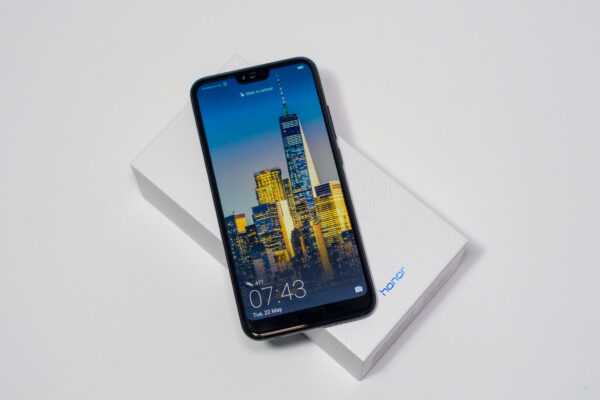
Flagship smartphones are usually pricey, what with Apple boldly leading past the US$1K mark, but occasionally we might just catch a really cool break. Huawei’s Honor brand recently announced their new Honor 10 flagship. It has great specifications, but even greater is its surprisingly affordable price.
I’ll get into the price later, but I should mention now that the Honor 10’s price in Singapore is especially attractive. There were many gasps of surprise during the Honor 10’s media launch when its price was revealed. We, in Singapore, are getting quite a good deal.
Numerous smartphones launched this year have so far shared a couple of common features: notched display, 19:9 display aspect ratio, and play heavily on AI, particularly on improving camera capabilities. The Honor 10, likewise, has all these.
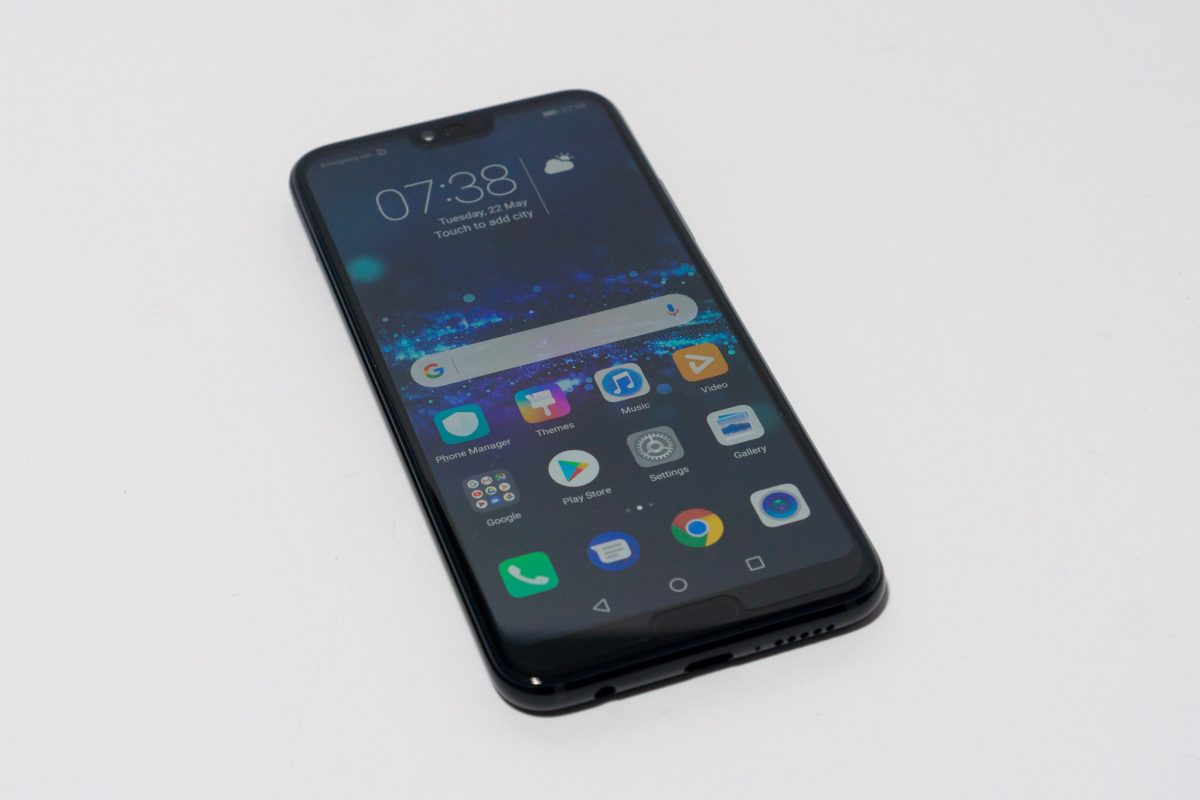
In a bid to make their smartphones standout better from the crowd, a number of manufacturers are placing a fair bit of emphasis on beautiful design. The Honor 10, similarly, is a beauty. Honor is particularly proud of the gorgeous, striking finish they’ve achieved with the Honor 10.
This smartphone has a 15-layer process 3D glass on the back that takes as much time to manufacture as it does the rest of the device. The glass produces a dazzling range of colours as you turn the smartphone through various angles. The Honor 10 definitely stands out. This especially so for the Phantom Blue colour, the flagship colour in Singapore. The other colour option is Midnight Black, which is what I have for my review set. The Midnight Black is somewhat more subtle.
The front 5.84-inch display covers almost all of the glass surface. This makes the Honor 10 a relatively compact smartphone, measuring 149.6 x 71.2 x 7.7 mm and weighing just 153 grams. People with smaller hands will likely still find the Honor 10 easy to use one-handed.
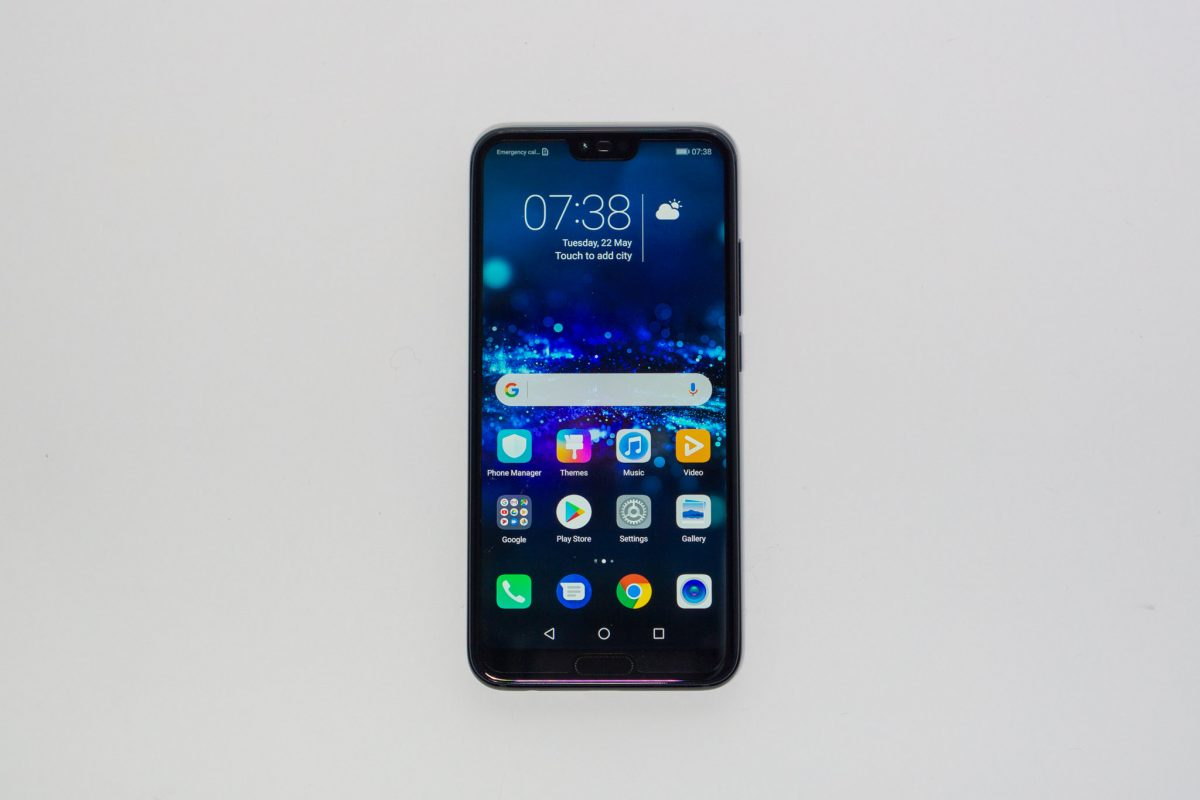
There’s the notch at the top, with a front camera featuring 24 MP resolution and f/2.0 lens. The chin at the bottom hides an ultrasonic under-glass fingerprint sensor that works even with wet fingers. In my tests, however, I didn’t find this sensor very quick even with dry hands, as compared with other flagship smartphones. However, that it works with wet fingers could be a bonus for some people.
The front display, at 5.84-inch diagonally, has 1080 x 2280 pixels, giving you about 432 PPI pixel density. It’s an IPS LCD display, and it looks great. However, perhaps with it being IPS LCD, the Honor 10 doesn’t offer an always-on display.
The SIM card tray is on the left side. The Honor 10 supports dual nano-SIM. There is no room for microSD though.
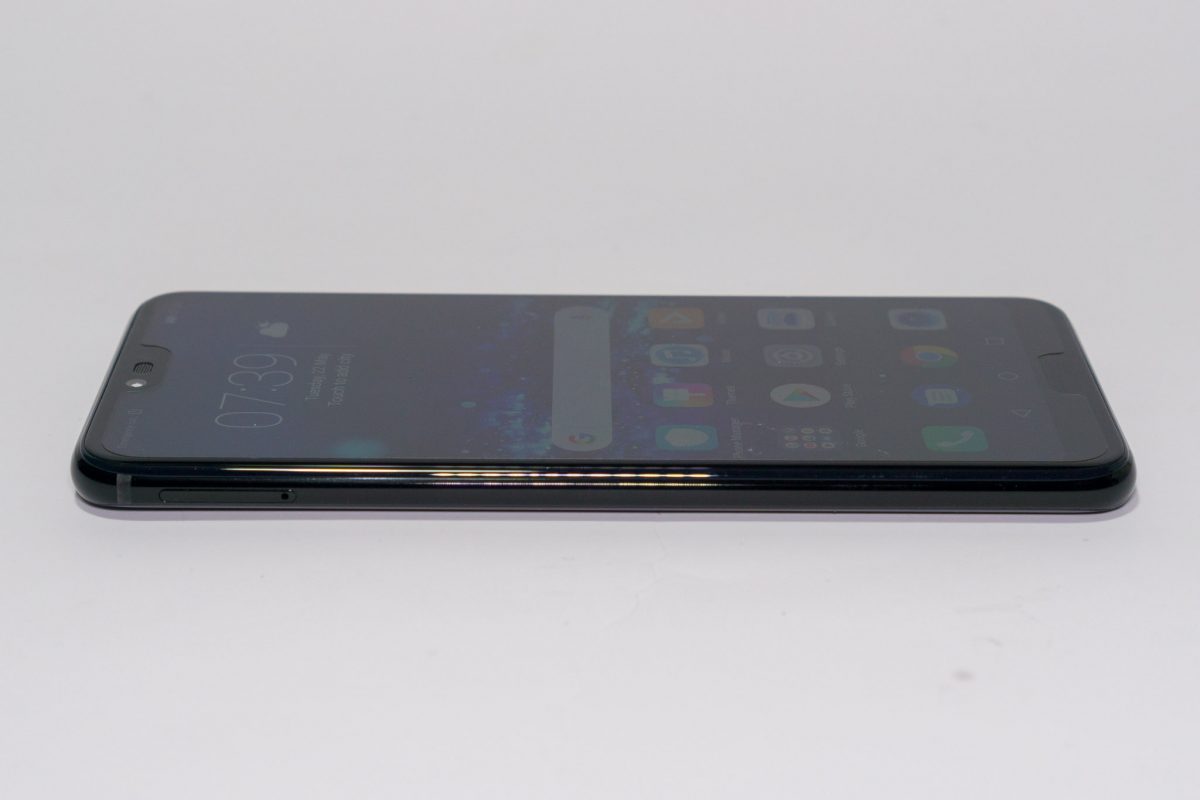
There’s an infrared port at the top of the Honor 10, and the usual volume rocker, and power button below, on the right side of the device.
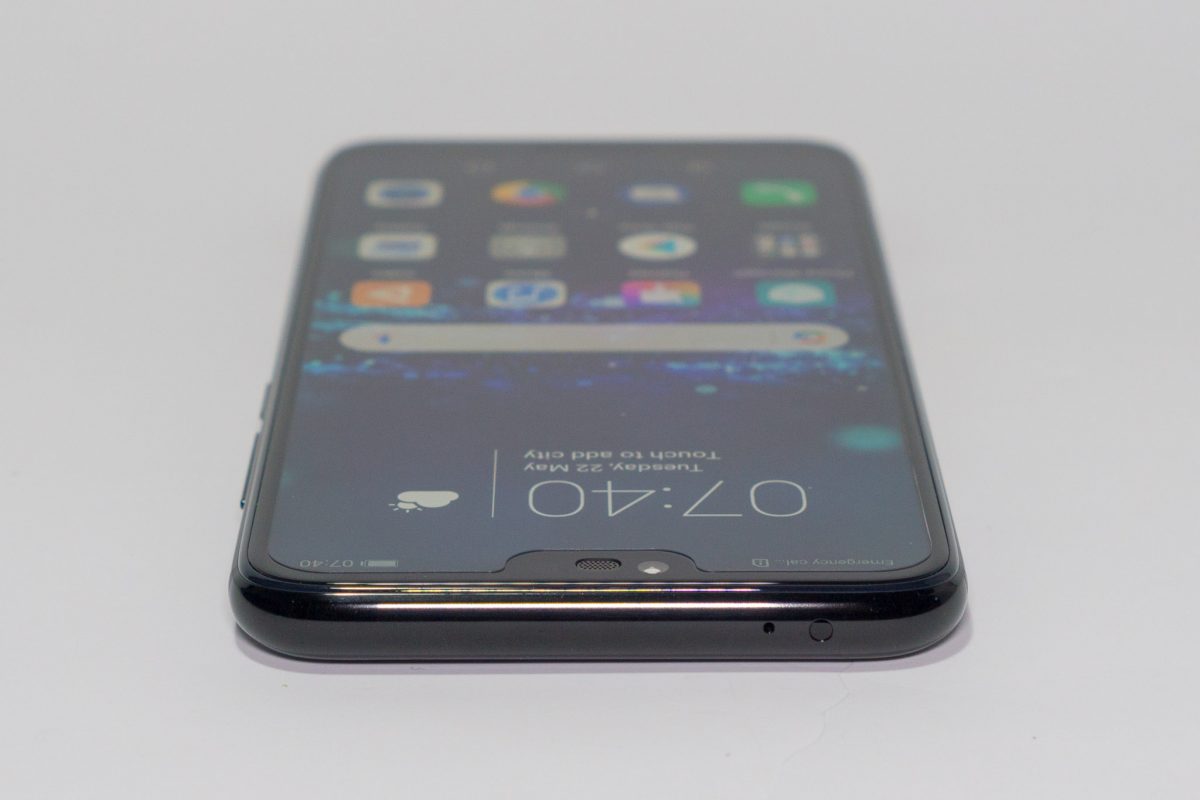
At the bottom, you’ll find a USB Type-C port for charging, supporting Honor SuperCharge ( 5 Volt at 4.5 A), which gets you from 0% to 50% battery in 24 minutes.
Just the way I like it, there’s also the 3.5 mm headphone jack at the bottom.
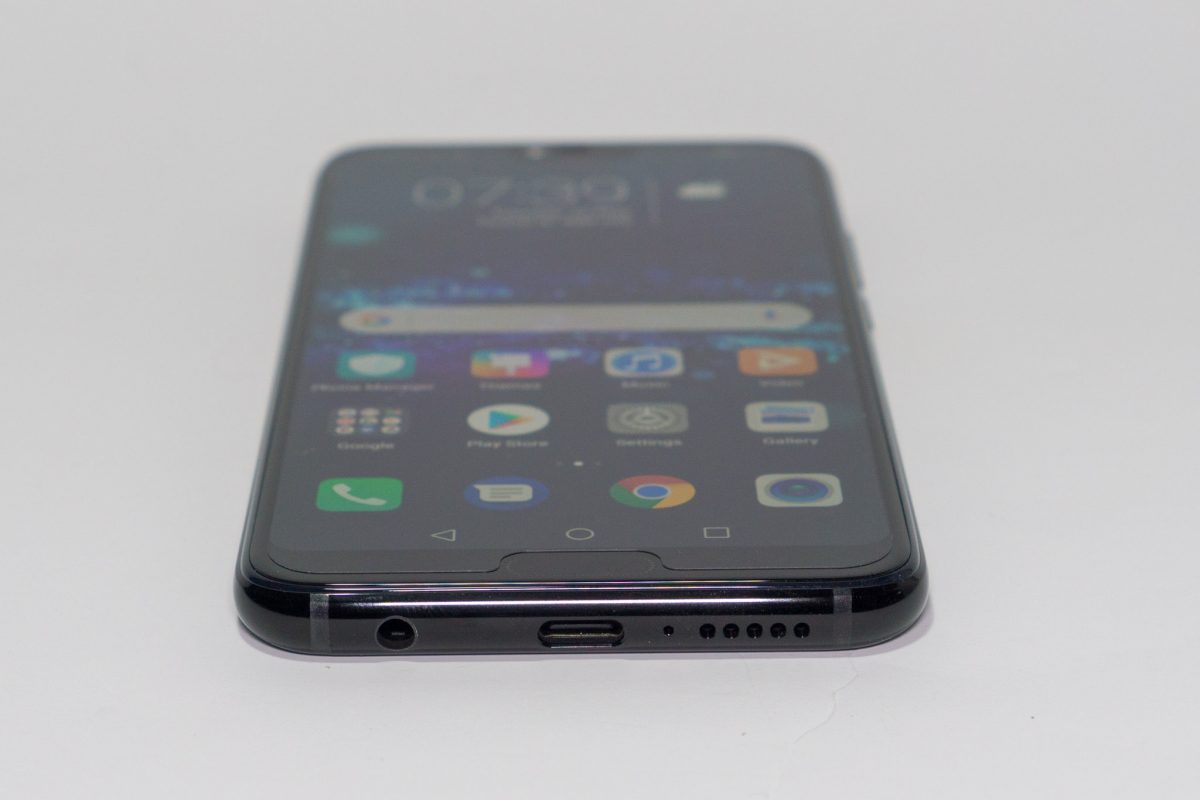
The back, as mentioned earlier, is really beautiful, especially if you get the Phantom Blue colour. Here, the Midnight Black version looks intriguing, though perhaps not altogether stunning. The main gadgetry on the back is the dual-camera setup. The Honor 10 gives you a 16 MP colour sensor a 24 MP monochrome sensor, both with f/1.8 lenses. The camera supports phase detection autofocus and LED flash.
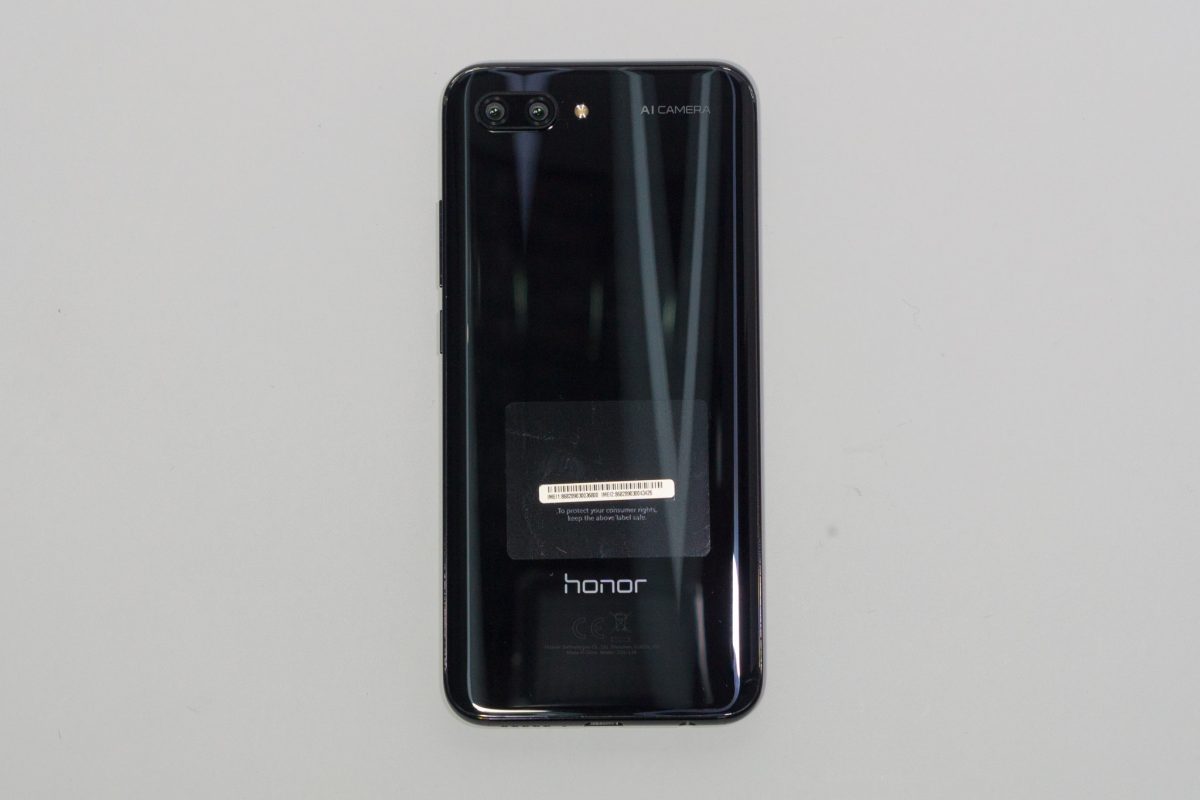
Under the hood, the Honor 10 is powered by Huawei’s octa-core Hisilicon Kirin 970, the same as on the Huawei P20. There’s 4 GB of RAM and 128 GB of flash storage.
For connectivity, the Honor 10 gives you dual-band 802.11 a/b/g/n/ac Wi-Fi, Bluetooth 4.2 with Qualcomm aptX HD audio, and LTE cellular radios. Positioning is supported with A-GPS, GLONASS, and BDS. There is NFC included too.
The Honor 10 has a 3400 mAh battery. It’s quite adequate, scoring 2870 on Geekbench 4 Battery tests. This smartphone should last the whole day with casual use.
For software, the Honor 10 runs the latest EMUI 8.1 OS, based on Android 8.1.
In the camera department, the Honor 10’s AI-powered photo-taking capabilities seem to be quite impressive. The Kirin 970 processor has an embedded Neural Processing Unit (NPU) that recognises over 500 scenarios in 22 categories. It can handle multiple subjects, and segment images in multiple layers. It also has a capable AI portrait mode.
I personally find in many smartphones the “AI” gets a little carried away with image processing, producing a result that looks, perhaps, unreal. However, it seems many people are happy with such results. The Honor 10 definitely has a capable camera, but whether you like what it does may be a different matter. I’ll write more about the camera capabilities in a later post.
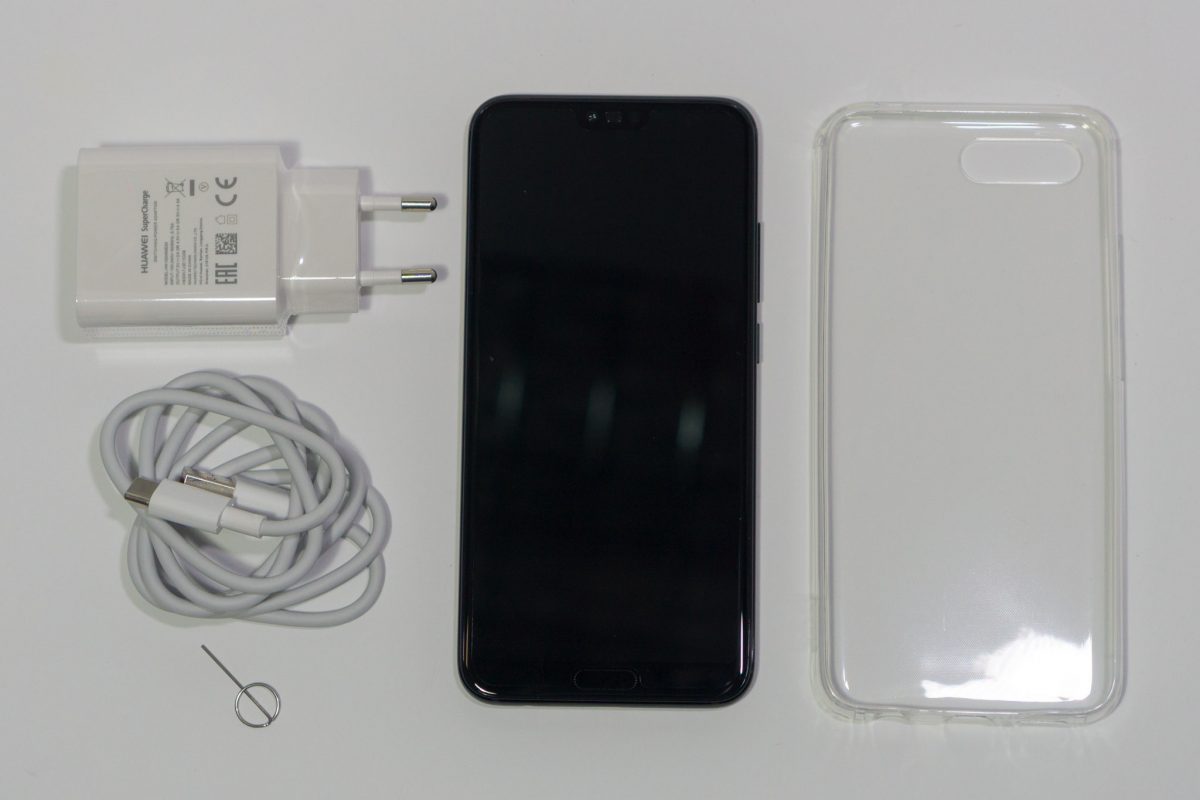
In the box, the Honor 10 comes with a fast USB charger, USB Type-C cable, SIM eject tool, a jelly case, and screen protector (already installed).
The Honor 10 is remarkably similar to the Huawei P20. They have the same processor, same amount of RAM and flash storage (based on models available in Singapore), the same notched display design, same lack of MicroSD expansion. and pretty much the same size. The Honor 10 is in fact slightly better in a few areas, such as increased resolution of both dual camera sensors on the back, higher resolution display due to the 19:9 aspect ratio, and slightly lighter. In fact, you get a 3.5 mm headphone jack on the Honor 10 too, a feature nowadays missing in many premium phones, including the Huawei P20.
Based on specifications, the Honor 10 is at least as good, if not better, than the Huawei P20. The latter is a pricey smartphone. How about the Honor 10?
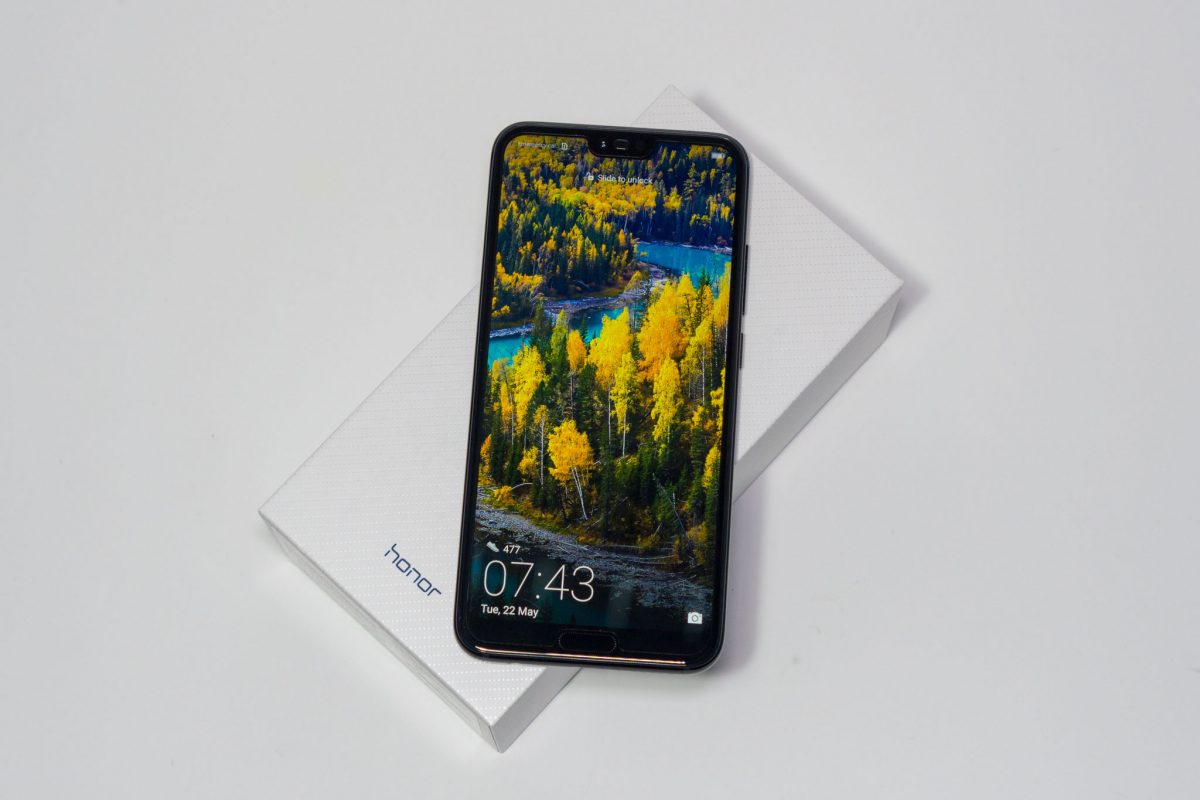
The Honor 10 retails at S$579, and it’s available at the Honor official store on Lazada.
I seldom like to talk about price a lot, except when it is something particularly noteworthy. The Honor 10’s retail price is such. It has the Huawei P20’s specifications, but costs a whole lot less. If you’ve been wanting to get the Huawei P20, but find it burns too big a hole in your wallet, then check out the excellent Honor 10.
Conclusion
The Huawei Honor 10 is very beautiful, has the Huawei P20’s specifications, and a very capable AI-powered camera, but costs a whole lot less.
Pros:
- Very beautiful design
- Very well-built
- Premium smartphone specifications
- Very capable camera
Cons:
- Not IP-rated (not water-resistant)
View Comment Policy